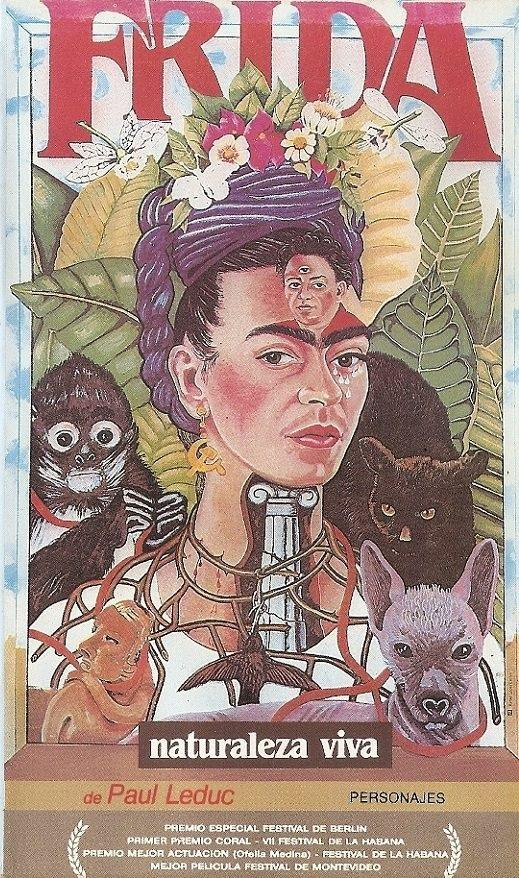
This 1983 film is characterized by a deep love for Mexican tradition and culture, as well as an almost metaphorical treatment of the experiences of the acclaimed painter, the references to her life, although accurate, also have a certain subtlety, which makes the film a spectacle worth seeing.
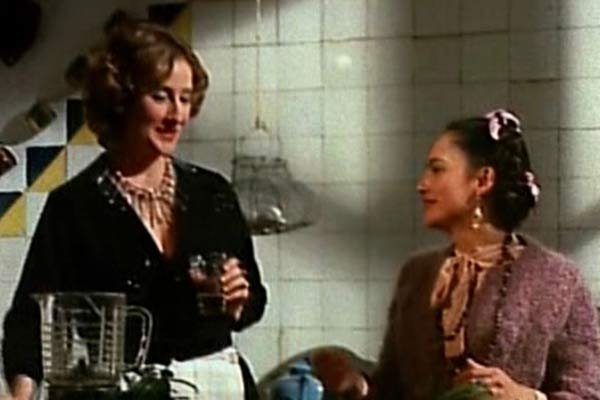
The director, Paul Leduc, manages to create an atmosphere where the passion for art and the struggles for ideals go hand in hand, plus the production design fully reflects the era of these events (1907 - 1954). The lead actress Ofelia Medina not only looks a lot like Frida, she also gives the character an aura of depth, which we sense Kahlo also transmitted, her presence makes the film, her passionate performance, which makes us feel even more respect for Ofelia, but also makes us feel empathy for Frida and makes us better understand her artwork. Even the actor who gives life to Diego Rivera, Juan José Gurrola manages to move us with his performance and makes us have a different reaction to his relationship with his wife.
Making a biographical film cannot be easy, as it competes with the preconceived idea we have of the life of the person portrayed, but the treatment of those involved, the real characters, make Frida: naturaleza viva more than a tribute, a living document of the life of these historical figures.
Respecting the colorimetry of the time, the film does not abuse the colors, as they are muted, highlighting the green of the gardens, the blue facade of Frida Kahlo's house, and of course the works of the most famous Latin American painter in the world. The organic colors of the plants, wood and stone are the fundamental elements in the color palette, which speaks of the deep-rooted and native lifestyle of these characters, contrasting with the red of Frida's dresses and makeup.
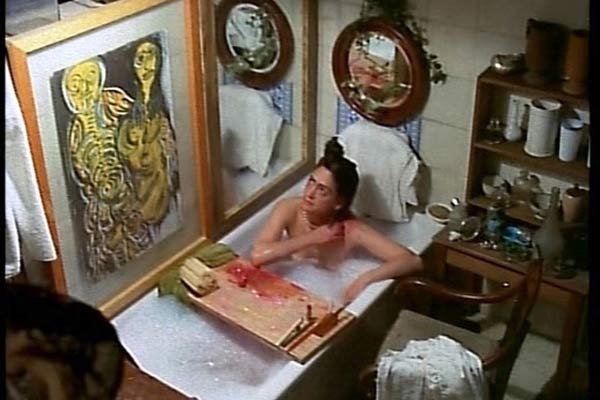
The mirrors, which appear in almost every scene, tell us about the painter's work, it could not be otherwise, her works are focused on a particular surrealism, where she portrays not only the Mexican culture, but also her own and each of the sufferings with which she faced life with great courage. Self-portraits are the leitmotiv of her pictorial work, so we are shown Frida looking at herself in the mirror as soon as she wakes up in the morning, and what other way would she have to represent pain, operations and illnesses, if not by knowing herself and seeing the face of affliction.
Being filmed in Frida's own home, La casa Azul, has much more historical significance. The Mexican elements are almost fully exposed, making subtle references to the Mexican Revolution or Leon Trotsky's visit, and all the political struggle that Frida Kahlo and Diego Rivera waged in life, but without going overboard with details, rather betting on Frida Kahlo's artistic legacy and interesting life.
Unlike other films about the painter's life, here she is not caricatured, nor is the terrible suffering that affected her during her lifetime ignored. It is a document about her life, and it does not seek to win audiences with nudity. Before seeing this film, I only had reference to another film starring Salma Hayek, where we were shown another Frida, almost an acrobat, when what is perceived of the painter is a deep calm through her photographs, in addition to suffering from polio, it is clear that her mobility was reduced. I give as an example the dance scenes of both works, in this one that brings us today, Kahlo is slow and incapable of exaggerated movements or to support the weight of another person, as she does in the film starring Hayek.
I don't want to detract from either film, I just want to talk about the accuracy of Frida's historical references: the vivid nature that brings us closer to the life of my favorite artist and makes us feel her pain, and the other that takes us away from the reality lived by her.
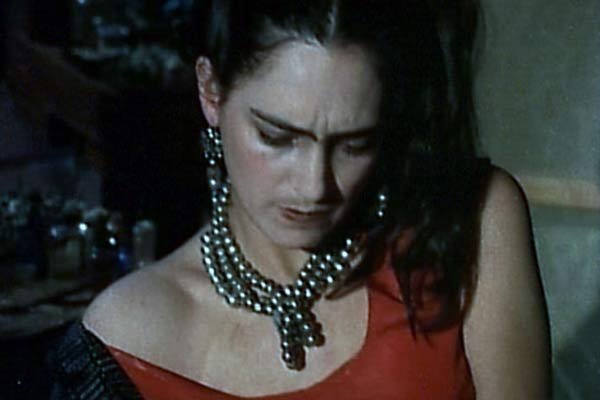
The whole treatment of the film makes it very attractive for people like me, who are faithful followers of Frida Kahlo and want to delve deeper into her life and work, learn more about the era in which she lived and learn about the motivations that led her to create the works she painted. It is a masterpiece as well as a great tribute to a woman who, in spite of living locked up because of the traumatisms to her bones, decided to live intensely.


Español
Esta película de 1983 se caracteriza por un profundo amor por la tradición y cultura mexicana, además de un tratamiento casi metafórico de las vivencias de la aclamada pintora, las referencias a su vida, aunque son exactas también poseen cierta sutileza, que hace de la película un espectáculo digno de ver.
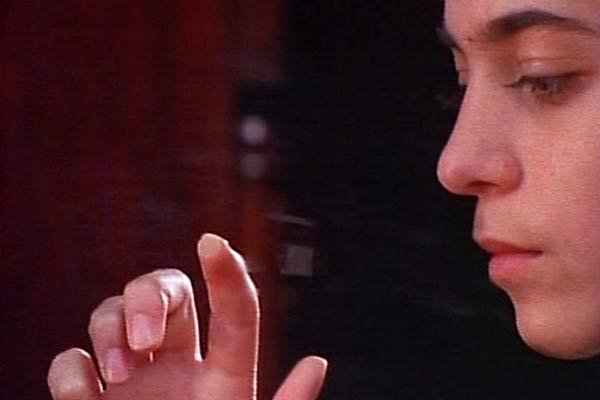
El director, Paul Leduc, logra crear un ambiente donde la pasión por el arte y las luchas por los ideales van de la mano, además el diseño de producción refleja completamente la época de estos acontecimientos (1907 - 1954). La actriz principal Ofelia Medina no solo se parece mucho a Frida, también le otorga al personaje un aura de profundidad, que intuimos también transmitía Kahlo, su presencia hace la película, su actuación apasionada, que nos hacen sentir aún más respeto por Ofelia, pero también nos hace sentir empatía por Frida y hace que comprendamos mejor su trabajo artístico. Incluso el actor que da vida a Diego Rivera, Juan José Gurrola logra conmovernos con su actuación y hace que tengamos una reacción distinta de su relación con su esposa.
Hacer un film biográfico no puede ser fácil, ya que compite con la idea preconcebida que tenemos de la vida de la persona retratada, pero el tratamiento que reciben los involucrados, los personajes reales, hacen que Frida: naturaleza viva más que un tributo, un documento vivo de la vida de estos personajes históricos.
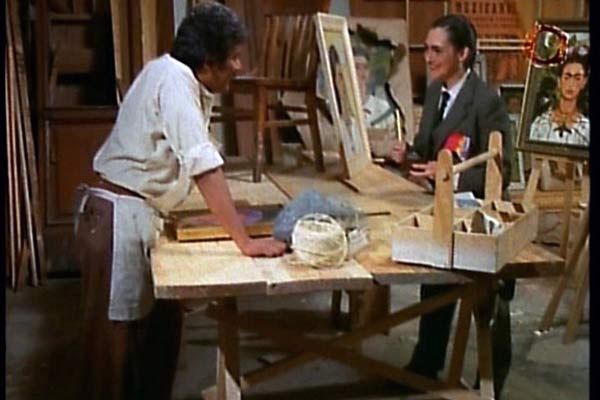
Respetando los colorimetría de la época, el film no abusa de los colores, siendo que estos están apagados, resaltando el color del verde de los jardines, la fachada azul de la casa de Frida Kahlo, y por supuesto las obras de la pintora latinoamericana más famosa del mundo. Los colores orgánicos, de las plantas, la madera y la piedra, son los elementos fundamentales en la paleta de colores, que nos habla del profundo arraigo y de un estilo de vida autóctono de estos personajes, contrastando con el rojo de las vestidos y maquillaje de Frida.

Los espejos, que aparecen en casi todas las escenas, nos hablan del trabajo de la pintora, no podía ser de otra manera, sus obras se centran en un surrealismo particular, donde retrata no solo la cultura mexicana, también la suya propia y cada uno de los padecimientos con los que enfrentó la vida con gran valentía. Los autorretratos son el leitmotiv de su obra pictórica, así que nos muestran a Frida mirándose al espejo nada más se despierta en las mañanas, y qué otra manera tendría de representar los dolores, operaciones y enfermedades, sino es conociéndose a sí misma y viendo de frente la cara de la aflicción.
Al estar filmada en la propia casa de Frida, La casa Azul, tiene mucha más importancia histórica. Los elementos mexicanos están expuestos casi en su totalidad, haciendo sutiles referencias a la Revolución Mexicana o la visita de León Trotsky, y toda la lucha política que ejercieron en vida Frida Kahlo y Diego Rivera, pero sin excederse en detalles, más bien apostando por el legado artístico y la interesante vida de Frida Kahlo.
A diferencia de otra película sobre la vida de la pintora, acá no se le caricaturiza, ni obvian el terrible padecimiento que en vida afectó a la pintora. Es un documento sobre su vida, además no busca ganar audiencias con desnudos. Antes de ver esta obra fílmica, solo tenía referencia de la película otra protagonizada por Salma Hayek, donde nos mostraban a otra Frida, casi acróbata, cuando lo que se percibe de la pintora es una profunda calma a través de sus fotografías, además de que al padecer poliomielitis, está claro que su movilidad estaba reducida. Pongo como ejemplo las escenas de baile de ambas obras, en esta que nos trae hoy, Kahlo se muestra pausada e incapaz de movimientos exagerados o de soportar el peso de otra persona, como lo hace en la película protagonizada por Hayek.
No quiero desmerecer ninguna película, solo quiero hablar de la exactitud de las referencias históricas de Frida: naturaleza viva que nos acerca más a la vida de mi artista favorita y nos hace sentir su dolor, y la otra que nos aleja de la realidad vivida por ella.
Todo el tratamiento de la película la hace muy atractiva para las personas que como yo, somos fieles seguidoras de Frida Kahlo y deseamos profundizar sobre su vida y su obra, conocer más de la época en la que vivió y aprender sobre las motivaciones que la llevaron a crear las obras que pintó. Es una obra maestra además de un gran homenaje a una mujer que a pesar de vivir encerrada a causa de los traumatismos de sus huesos, decidió vivir intensamente.

Referencias:
- Imágenes de SensacineMx y Filmaffinity
References:
- Images from SensacineMx y Filmaffinity

Tu lectura es un gran honor para mi
Your reading is a great honor for me
Follow me


...

The rewards earned on this comment will go directly to the people(@caracasprin) sharing the post on Twitter as long as they are registered with @poshtoken. Sign up at https://hiveposh.com.
Qué interesante esta peli! No sabía de ella, se nota que es capaz de plasmar muy bien a Frida! Gracias por compartirla!!
It is very interesting and daring for its time, I recommend you to watch it to better understand the life of this great artist.
Greetings!
Saludos!
Traes al presente un filme que pude ver hace muchos años (por suerte, antes de la protagonizada por Salma Hayek, aunque esta versión tiene sus valores), y entonces me impactó. Conocía la obra de Frida Kahlo y algo de su vida, pero la mirada que nos ofrece Leduc (un cineasta verdaderamente interesante: recuerdo particularmente Barroco y Latino Bar), con su maestría cinematográfica, me impactó. Gracias por tu post, @caracasprin.
It is the first film I've seen of this director, but his way of portraying this Mexican artist makes me admire him and want to know more of his filmography. Of course I liked Salma's film at the time, but the portrayal is implausible and Manichean, I always prefer to see the reality of someone's life rather than the holywoods postures that distort the life of a master like Frida.
Thanks for your comment!
Aunque no comparto los ideales políticos que tenia esta artista, si admiro su obra. Separa la obra de la persona, porque hay muchos artistas de diversas áreas que me gusta lo que hacen y lamentablemente son de la izquierda. Esta película no le ha visto, de Frida solo vi la versión que hicieron con Salma. La buscare para darle una mirada.
Muy buen post sobre una versión fílmica muy valiosa acerca de la vida de esa artista extraordinaria, en vida y en obra, que fue Frida Kahlo, más allá de las diferencias con posiciones ideológicas de ella y su marido. Gracias y saludos, @caracasprin.
No he tenido la oportunidad de verla, pero la reseña que das es muy interesante, la verdad pienso que es una película que hay que ver, tomando en cuenta que Frida Kahlo ha sido una mujer y artista tan renombrada.
Gracias por compartir, y sobre todo por crearnos un interés en ser parte de esta historia.
Saluditos.
Interesante. No sabía de la existencia de esta película. La descagaré para verla :)
¡Gracias por compartir!
Your content has been voted as a part of Encouragement program. Keep up the good work!
Use Ecency daily to boost your growth on platform!
Support Ecency
Vote for new Proposal
Delegate HP and earn more
Sencillamente espectacular. Un saludo.
Congratulations @caracasprin! You have completed the following achievement on the Hive blockchain and have been rewarded with new badge(s):
Your next target is to reach 15000 upvotes.
You can view your badges on your board and compare yourself to others in the Ranking
If you no longer want to receive notifications, reply to this comment with the word
STOPCheck out the last post from @hivebuzz: